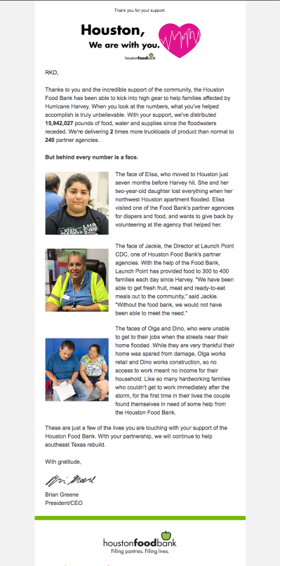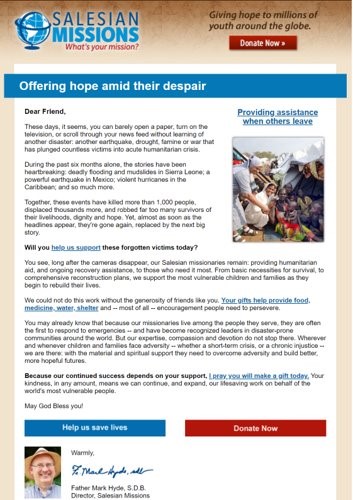After more than a month of updating messaging to include disaster fundraising appeals and increased digital fundraising efforts, many nonprofit organizations are seeing increases in donations and a rise in new donors giving to their cause.
And while an increase in donors is never a bad thing, we all know that retaining disaster donors once the crisis has passed can prove to be a challenge.
The COVID-19 pandemic is unprecedented in its scope and impact, but we can look at how disaster donors typically behave to understand what to expect. We’ll also discuss several strategies your organization can implement to effectively convert them to your mission.
WHAT MAKES DISASTER DONORS DIFFERENT?
Disaster donors are unique for several reasons, but the most important thing to remember is that these donors typically give out of an immediate emotion.
Between the various news stories discussing the impact of COVID-19 and your impactful emergency messaging, donors’ emotions are a huge factor in this sharp rise in donations.
Disaster donors are also less likely to be local. Because this is a global pandemic, donors can be driven to give on a much larger geographic scale than normal.
That means COVID-19 donors may have a weaker tie to your mission than traditional donors. In 2017, for example, 31% of U.S. households donated to disaster relief. The following year only 5% of U.S. households donated to provide continued relief from 2017 disasters.
That’s a pretty low retention rate. But with some careful segmentation and messaging crafted specifically for disaster donors, you can convert these donors into long-term supporters of your mission.
SEGMENTING YOUR DONORS
As disaster donors come through your files, make sure you code them as such and keep them that way until they behave differently.
After a donation, disaster donors should receive an email welcoming them to the organization. This message should also give them the opportunity to explore your mission, building the foundations for a long-term relationship.
For those who gave larger gifts, use existing donor models to identify future giving capacity.
Mid-major donors should be called to say, “thank you,” welcoming them to your organization and updating them on how their donation is helping fight the coronavirus pandemic.
USING INTENTIONAL MESSAGING TO FORM A CONNECTION
Every donor wants to feel special, but it’s especially important during times of crisis. Create messaging that acknowledges their support and the difference their donation is making.

Make sure you give specifics on the impact their donation has made where possible – how many animals they have helped rescue; how many meals their donation provides for families in need, etc.
It’s important to link the impact they’re making in this disaster back to your mission, furthering the relationship you’re trying to cultivate.
After that, you can continue to cultivate your connection with these donors through disaster relief updates.
Do you have any powerful stories about the individuals you’re helping during and after the pandemic? Tell them! We’re all looking for good news and human connection, and these can be a powerful tie to donors who felt the call to give during a disaster.
Another great way to keep donors tied to your mission is to add them to your media audiences.
ASKING FOR THE SECOND GIFT
Don’t be afraid to ask for a second gift within 60 days of their first donation. You’d be surprised, especially right now, how many donors are willing to give more once they know their donation is helping those in need.
Remind them of their previous support and the impact it made. If your organization is still in need, provide them with a relevant second-gift opportunity.

ANALYZE AND SEGMENT AGAIN
After all your work cultivating these donors, it’s time to take a second look. How has their behavior changed? We see a couple of segmenting options here:
- Add to lapsed donor campaign. Are they failing to respond to your second-gift asks? Treat them as warm prospects. Be sure to stick to the channel in which they made the disaster gift.
- Set aside as a disaster donor. This group still has great value! Continue to engage them with targeted intentional messaging and call on them when another emergency arrives.
Don’t write off disaster donors as one-time givers. It’s possible to convert new donors during this crisis. By segmenting these donors and tapping into the emotion that led them to give to drive copy and creative, you can form a lasting relationship between disaster donors and your cause.





Leave a comment: